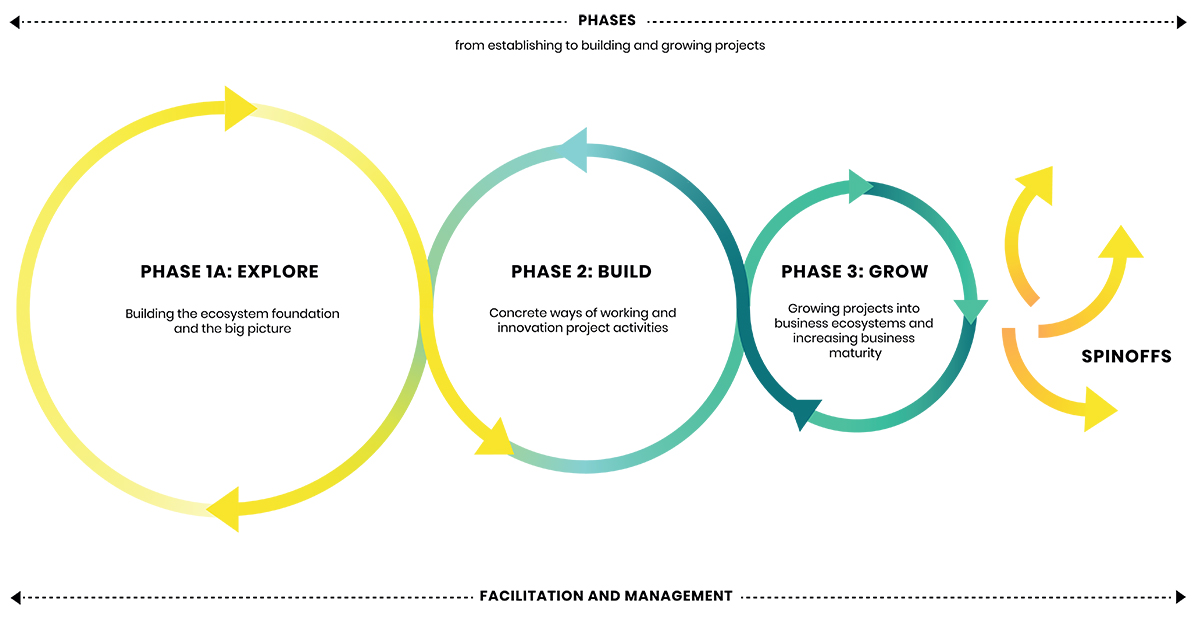Dr Jatta Jussila discusses the benefits of open innovation and how cross-sectoral partnerships can better solve systemic challenges such as climate change and enable the European Green Deal
Concerning systemic challenges requiring systemic solutions, we know that global challenges are contributing to the fact that all industries are undergoing some kind of transformation today. Climate change, digitalisation and the plastic challenge, for instance, are trends with a systemic nature – they challenge our way of life and our traditional businesses. Challenges of this magnitude require systemic solutions that go beyond the resources of individual operators – companies, industries, communities, even countries. Systemic changes tend to break the boundaries of industrial sectors, and they call for efficient public-private collaboration.
Why innovation ecosystems?
On the brink of these huge global challenges, both companies and societies need new operating models, practices and partners to find a better way forward, to be more competitive and to grow sustainably. Ecosystems are communities where members interact and seek balance and where they all flourish. Mimicking the nature, operating in open public-private ecosystems provide us with an efficient tool to co-develop new systemic solutions (interact), to reinvent businesses (flourish) and, at the same time, to meet the set goals for sustainable development (balance).
The secrets of success for open innovation ecosystems
What are then the ingredients that make an open innovation ecosystem successful? This was one of the key questions when we at CLIC Innovation Ltd started our own research and development work to build, what we call, an Innovation Ecosystem Playbook to support the management of ecosystems with efficient tools. Through our own experience and after interviewing several ecosystems from different countries, we can conclude that there are basically seven key success criteria or core tasks for well-working ecosystems. We have also found that ecosystems develop through phases and that each development phase sets specific demands on the management of the ecosystem.
At the early stage of development, in the Exploration Phase, the first task for the ecosystem is to identify and digest the reasons for its existence. Co-creating a joint vision may help with this. Ecosystems exist for different reasons, but in our view, the best innovation ecosystems are built around a purpose of solving a systemic challenge, they involve different industrial sectors and scientific disciplines and form a public-private partnership.
The second task is to define a governance model and rules for the ecosystem. Ecosystems are like amoebas; they constantly develop and reform. In open innovation ecosystems, someone needs to take the “driver seat” to steer the ecosystem towards the common goal. This someone needs to be a neutral facilitator with no own agenda present. The facilitator should bring in managerial expertise, tools and models that support the ecosystem to work in an open innovation spirit.
The third crucial task in the Exploration Phase is to identify all the expectations the partners may have for the ecosystem and its activities. As ecosystems comprise of different kinds of actors with very different positions, these viewpoints need to be openly discussed and understood. A skilled neutral facilitator knows how to manage diversity and bring the most out of it within an ecosystem.
Building trust between the partners is the fourth important task. Trust is a fickle thing and needs time to develop, but with the right communication and co-operation models, it can be nurtured.
As the ecosystem develops further to the Build Phase, structured ways of working are needed. Ecosystems should be open and flexible, but still need strategic activity plans and milestones to be efficient. The task of the ecosystem facilitator is to make sure that these exist. Furthermore, extensive communication, both external and internal, should be maintained throughout the ecosystem lifecycle.
Last but not least, the seventh key success factor for ecosystems, in our experience, are well-defined key performance indicators and a systemic way of following the ecosystem performance using these indicators. Many current ecosystems lack measurable targets completely.
4Recycling ecosystem to beat the Plastic Challenge
To play our part in creating a more sustainable future, CLIC Innovation drives an open innovation ecosystem called “4Recycling” which is targeted at solving the Plastics Challenge. 300 million tonnes of fossil oil-based plastics are produced worldwide each year. Much of this amount ends up in landfills or freely into our environment. There is a clear need for a controlled transition from a fossil-based economy to a circular bioeconomy. 4Recycling ecosystem aims at shaping the carbon-based material markets to fulfil the global sustainability goals. The ecosystem is open to organisations interested in finding new business opportunities and/or in building new competencies in plastics recycling and bio-based material alternatives.
GreenE2 ecosystem speeds up the Energy Transition
Another open innovation ecosystem led by CLIC Innovation is “GreenE2” which invites organisations interested in developing know-how and business opportunities related to power-to-X-to-power and products to join. The ecosystem boosts emergence of new business in three areas: green hydrogen, “e-products” and enabling technologies. In the future, the ongoing energy transition will enable extensive electrification, and the abundant availability of renewable electricity will enable decarbonisation of not only the energy industry but also many other industry sectors. Extensive cross-sectoral cooperation is needed to facilitate this enormous transformation. The decarbonisation will require the development and adoption of new technologies, new regulatory frameworks, and new business models. An open public-private ecosystem can make this change, therefore, GreenE2 is the ideal tool.
Cross-sectoral ecosystems are a powerful tool
The more complicated a problem, the more challenging it is to find a solution. Global challenges are highly complex, and curbing them requires systemic solutions. Let’s put our heads together – let’s form innovative ecosystems.
Please note: This is a commercial profile












